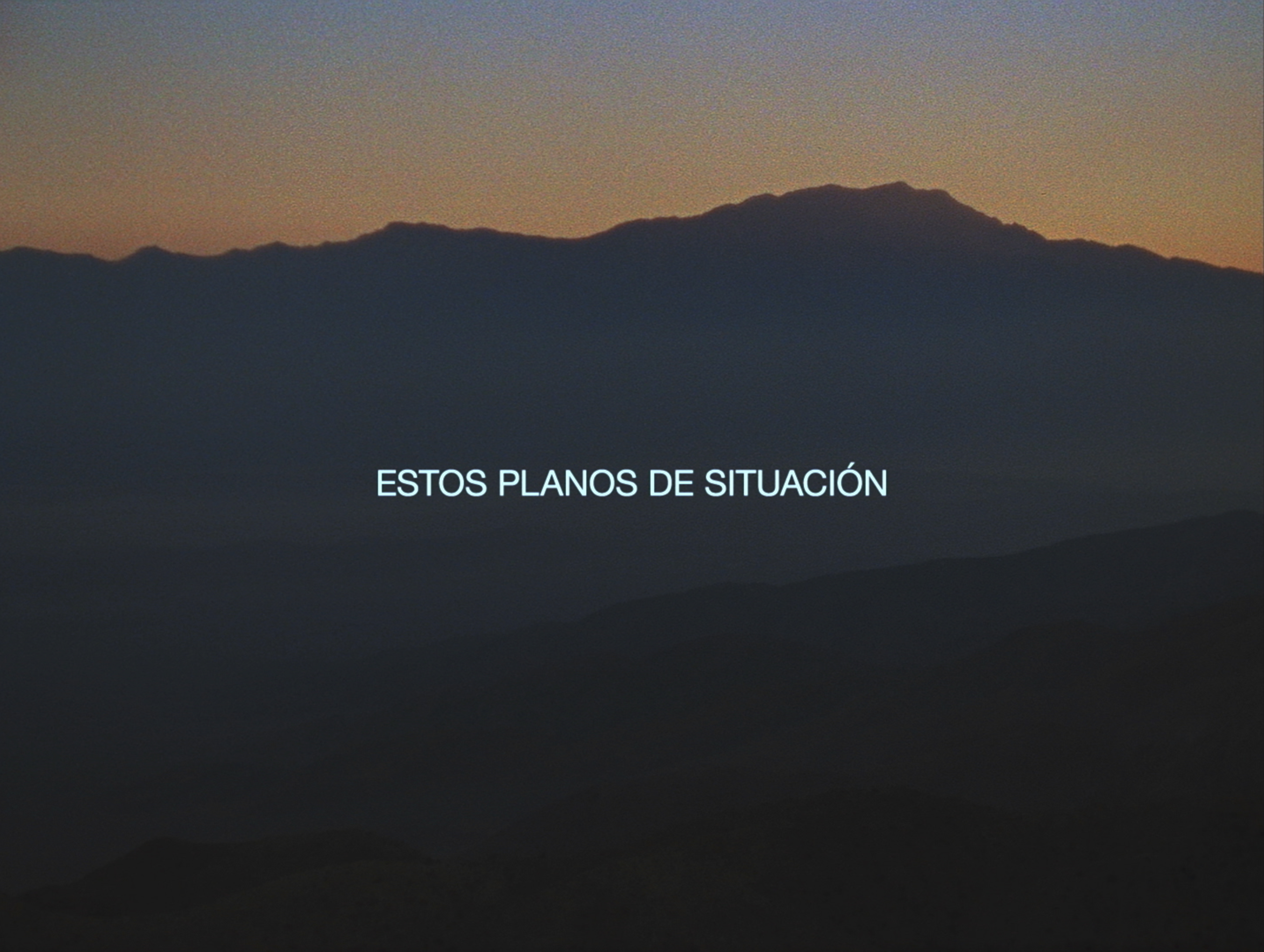

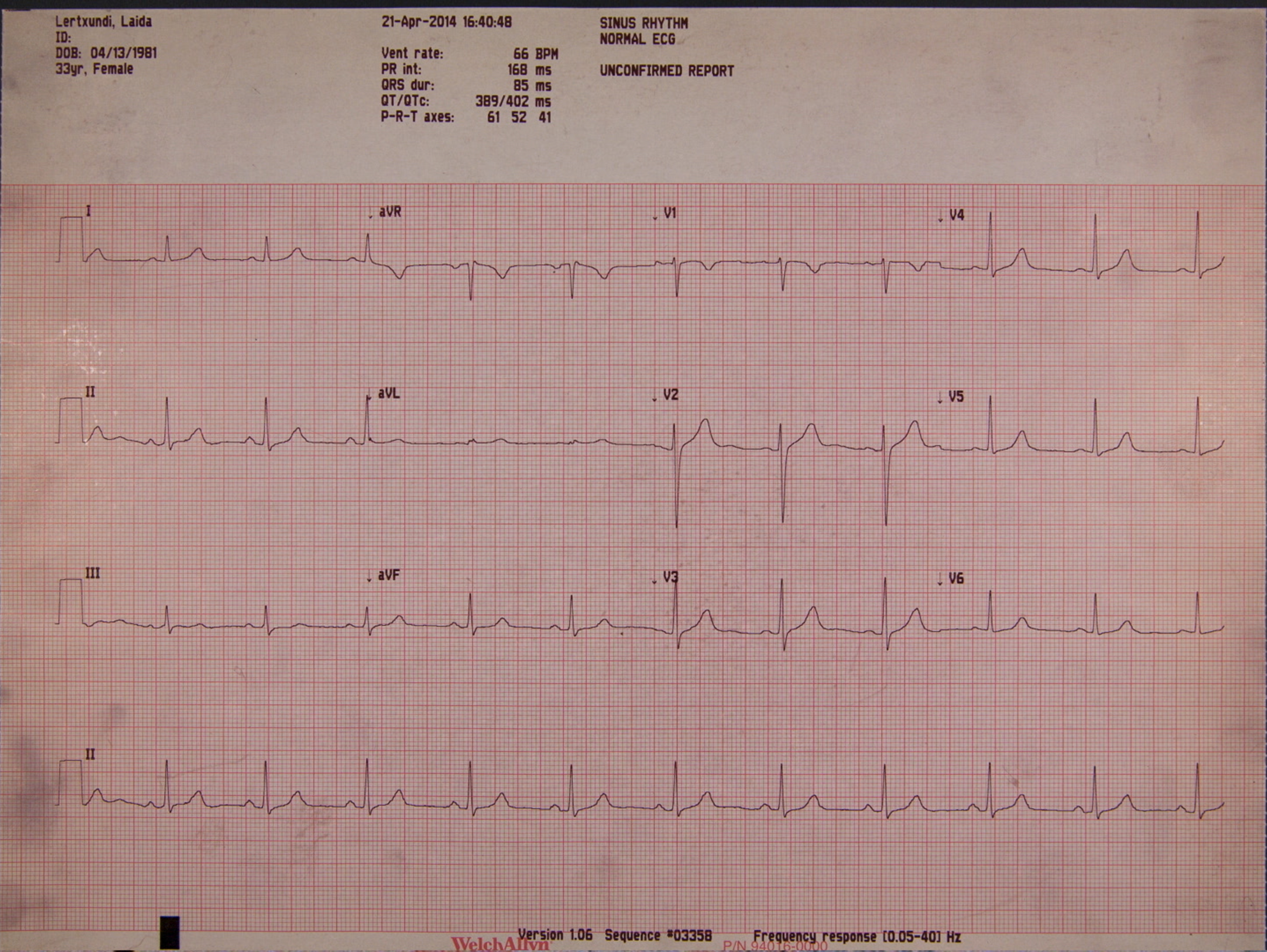
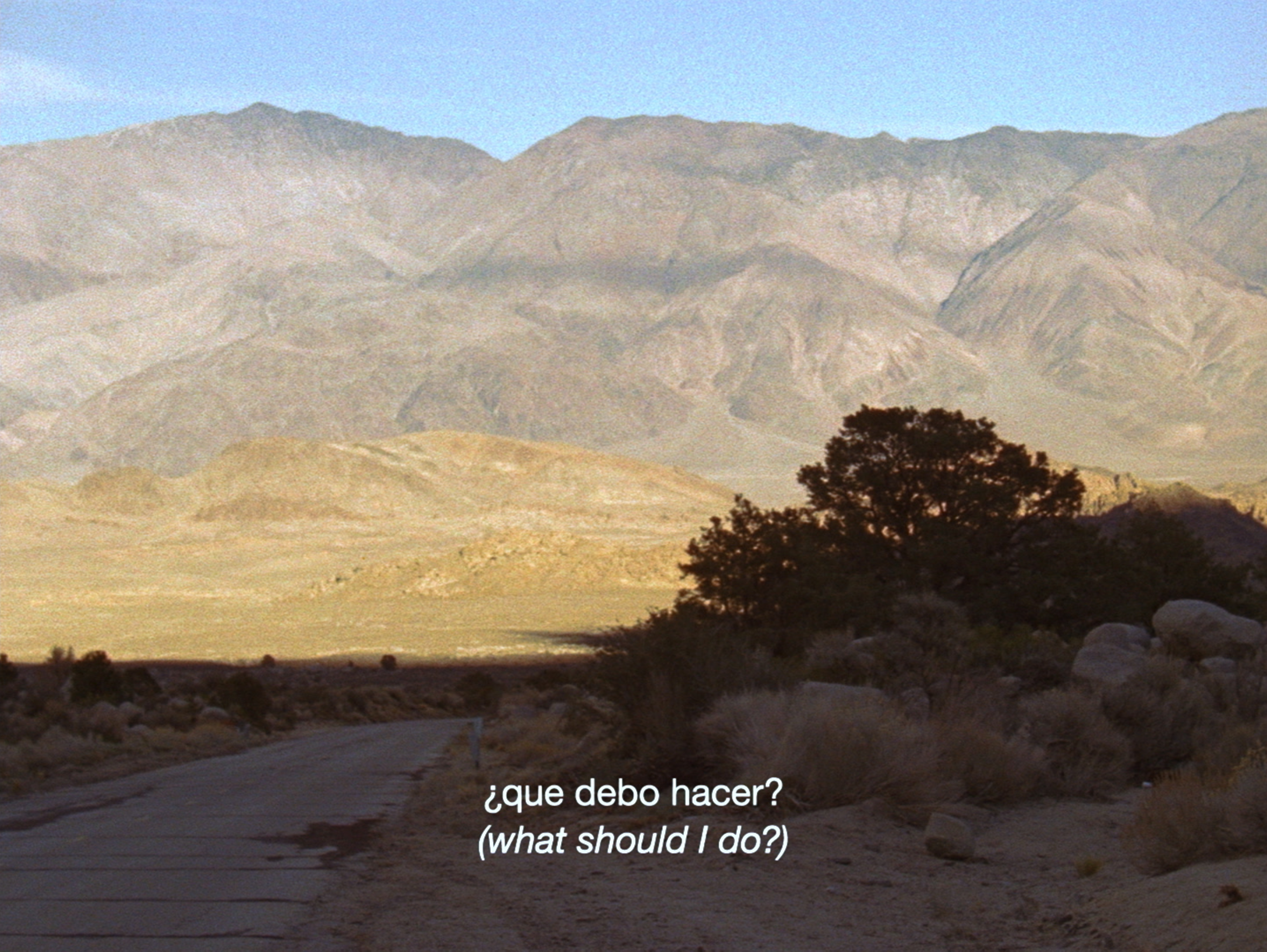
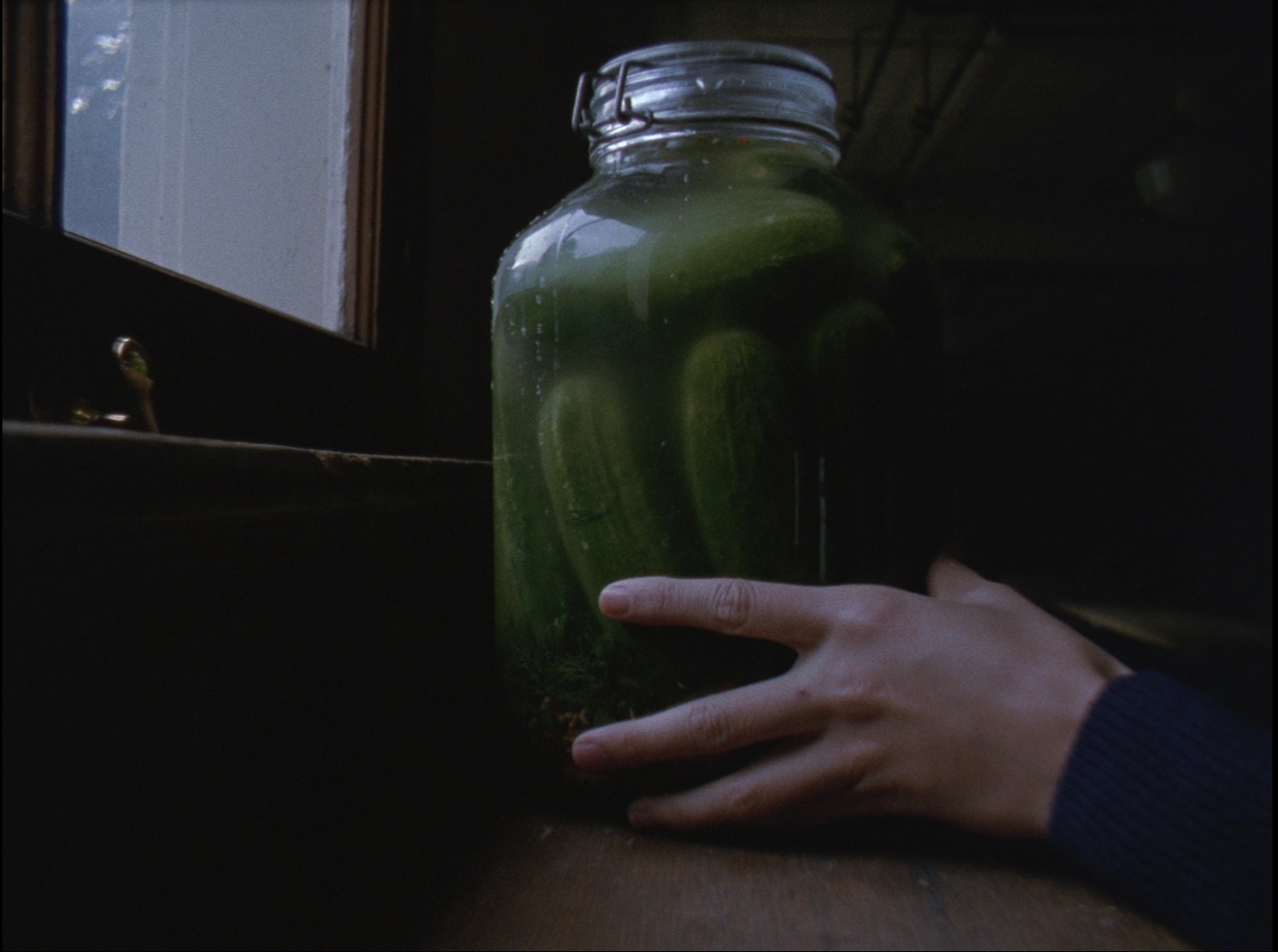
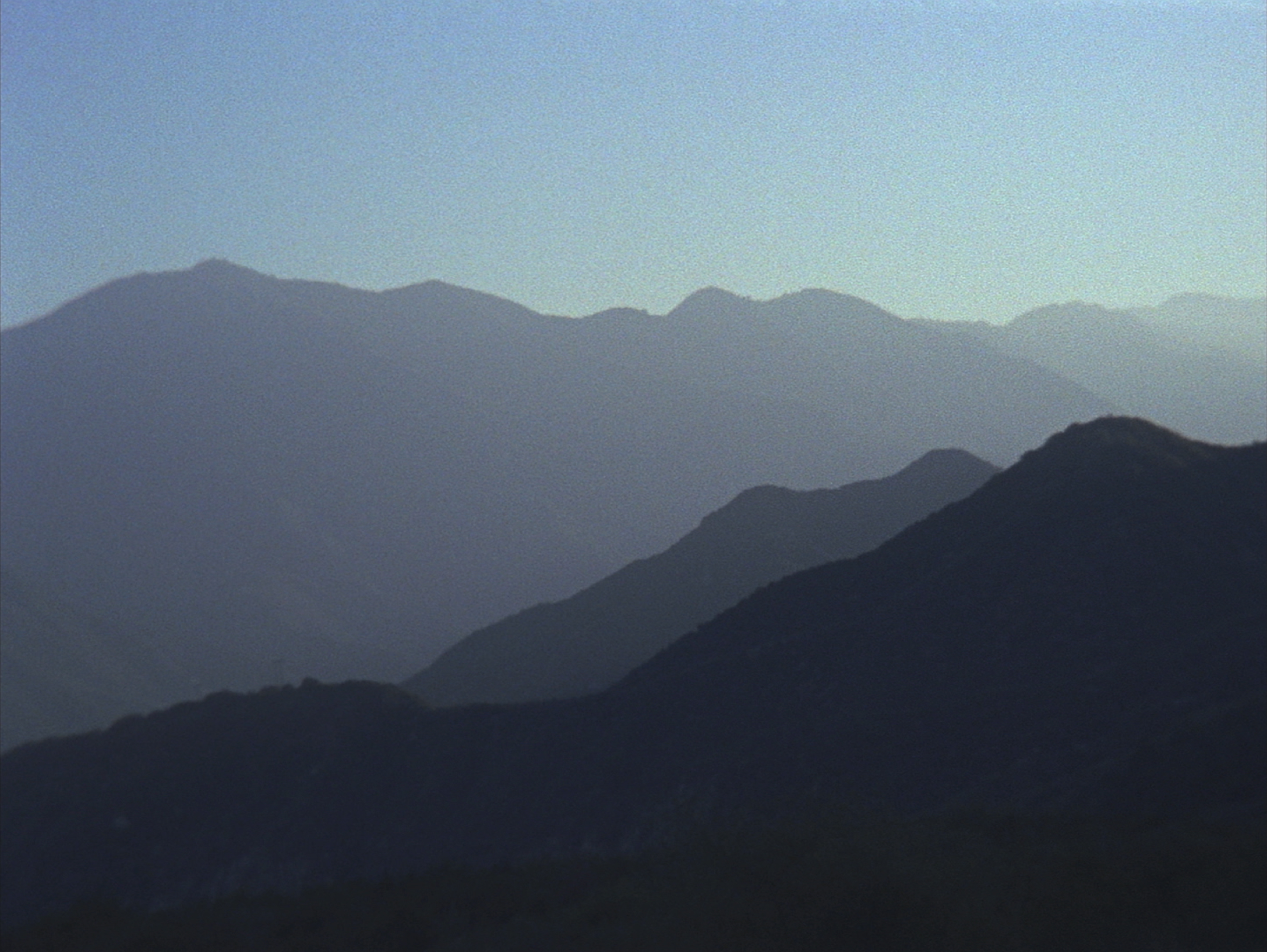


2015, 16mm, 11 min, color, sound
A certain trajectory of being lost is drawn across sparsely populated mountain regions while physical processes from heartbeat to orgasm shape image, sound and color patterns until the horizon is reached.
--With original sounds and music by
Ezra Buchla, Albert Ortega,
Laura Steenberge and Tashi Wada.
Shot in California at Forgotten Pass,
Key's Point, Mount Tam, The Pacific Ocean,
Azusa, Death Valley and Los Angeles.
Made with Tanner Cook, Ren Ebel
and Christina C. Nguyen
Typography by Lucas Quigley
Thanks to: Brian Block, ACB, Amina Cain,
Minjung Kim, Michael Robinson,
Headlands Center for the Arts,
CFF Fellowship for Visual Art.
Quantification also looms large in Lertxundi’s Vivir para vivir, which approaches the vexed relationship between structure and sentiment, or put differently, between representation and experience. “If I want to remember what happened on this trip, what should I do?” This question, drawn from writer Adolfo Bioy Casares, is introduced at the beginning of the film in subtitles on a black screen, situated between shots of a Southwestern mountain landscape. Within this frame of memory and desire, Vivir para vivir probes what happens to embodied experience when it becomes entangled with those techniques that seek to make it manageable and intelligible, filmic representation foremost among them. A color grid—the continuity of the chromatic spectrum disciplined into separate hues—cuts to the filmmaker’s own electrocardiogram, while a heartbeat fills the soundtrack. The West Coast Experimental Pop Band’s “I Won’t Hurt You” begins, marrying the physiological and emotional realms and opening a space between the measurable heart of the ECG and the unmeasurable heart of metaphor. Film, like an ECG, relies on an operation of quantization, sampling physical reality at twenty-four frames per second, but then reconstitutes movement in a qualitative way that denies and exceeds its preliminary rationalization. This tension between segmentation and synthesis is at the core of Vivir para vivir and surfaces with particular reference to cinema when Lertxundi stages a scenario of projection. She first reminds the viewer of the discrete basis of the apparatus before cutting to an extended series of shots of drifting clouds, precisely the motif that art historian Hubert Damisch saw as escaping the grid of linear perspective to revel in indeterminacy. Throughout the film, one gathers short glimpses of Lertxundi’s trip—a cactus, a cellist, a jar of pickles—that temper its conceptualism with diaristic sincerity.
Lertxundi concludes with a metonymical evocation of the ultimate challenge to representation posed by female desire: A sound recording of a female orgasm was visualized and the resulting images used to generate a synthesizer soundtrack and a pattern of solid color frames. The orgasm itself remains unheard. In their audiovisual abstraction, these closing frames suggest that private experience enters film only through a transformation beyond recognition—but seen in the context of Lertxundi’s practice, this transformation is not to be characterized negatively but understood as a site of distillation and creativity. As the notion of the quantified self becomes a neoliberal buzzword promising self-mastery and increased productivity, Lertxundi leads her viewers to a very different way of considering how life might be at once measured and unmeasurable, and how the cinema might be situated at the very intersection of the two. Never has Lertxundi’s tremendous ability to both continue and contest a predominantly male tradition of experimental filmmaking been as evident as in this intelligent and moving work, in which she continues to be fascinated by structure while casting doubt upon its ability to capture the flux of life.
Artforum Erika Balsom
Laida Lertxundi’s abstract visual compositions in Live to Live re-introduced the body on the soundtrack, with recordings of heartbeat and orgasm, a palpably fascinating response to avant-garde feminist cinema’s continual wrestling with the question of representation.
Sight & Sound, Sophie Mayer
November 04, 2015, London
It is a bold, sensuous kind of embodied cinema, ending with a blast of color timed to a recording of an orgasm.
Movie Morlocks, R. Emmet Sweeney
October 06, 2015, NYFF
El cine de Laida Lertxundi está hecho de planos rotos e interrumpidos, de imágenes terminando o de restos de imágenes. Una estética bressoniana de la fragmentación de los cuerpos y del espacio sugiere lo que podría estar ocurriendo fuera de cuadro. Vivir para Vivir es la más abstracta de sus películas; el cuerpo aquí no es siquiera un pedazo de cuerpo, sino un cuerpo aludido mediante un latido o un orgasmo que se alcanza como se alcanza un horizonte (de nubes y montañas).
La Furia Umana, Andrea Franco, 2015